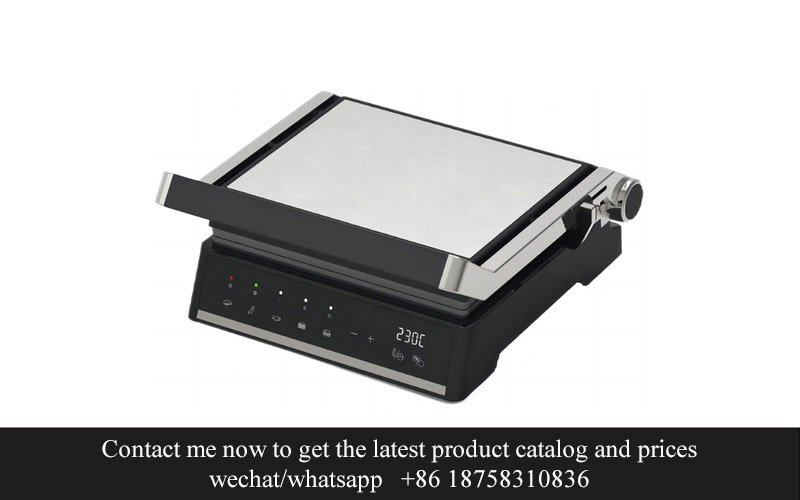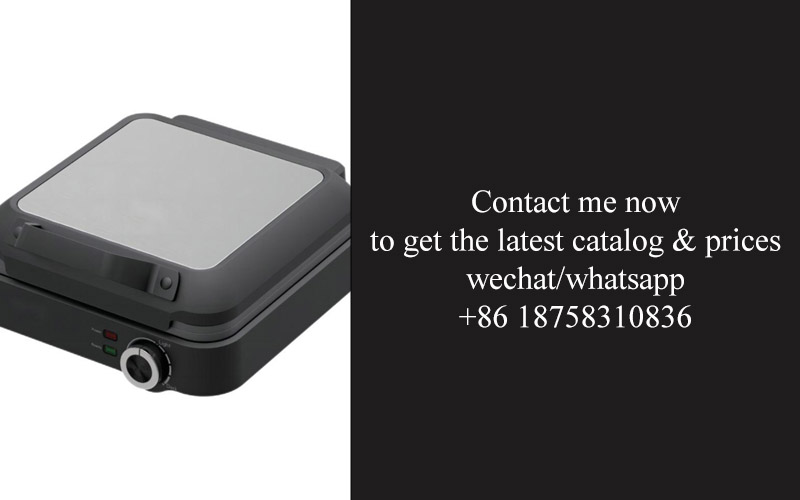Address
304 North Cardinal
St. Dorchester Center, MA 02124
Work Hours
Monday to Friday: 7AM - 7PM
Weekend: 10AM - 5PM
Address
304 North Cardinal
St. Dorchester Center, MA 02124
Work Hours
Monday to Friday: 7AM - 7PM
Weekend: 10AM - 5PM

As we delve into the heart of the kitchen, a silent revolution has been taking place. The shift from traditional cookware to ceramic coated non-stick plates is not just a change in material; it’s a transformation in how we perceive cooking, health, and sustainability. This article explores the evolution of ceramic coated non-stick plates, their impact on our daily lives, and the exciting prospects that lie ahead.
In the ever-evolving world of kitchen cookware, there’s a new star shining bright—ceramic coated non-stick plates. These innovative cookware pieces are not just a trend; they’re a revolution that’s changing the way we cook and clean in the kitchen. Imagine a world where food releases effortlessly, cooktops remain spotless, and your cooking experience is elevated to new heights. Welcome to the era of ceramic coated non-stick plates.
Gone are the days of sticky pans and endless scrubbing. These plates, with their sleek, easy-to-clean surfaces, are making cooking a breeze. The secret? A high-tech ceramic coating that’s not only non-stick but also durable, scratch-resistant, and free from harmful chemicals like PFOA and PTFE. This means healthier meals and a greener kitchen environment.
The appeal of ceramic coated non-stick plates is undeniable. They’re versatile, suitable for all types of cooktops, including induction, and they can handle a variety of cooking methods from sautéing to baking. But what’s really setting them apart is the way they enhance the cooking experience. The food doesn’t stick, which means fewer burned bits and less waste. Plus, the even heat distribution ensures that your dishes turn out perfectly every time.
As we delve into the heart of this revolution, it’s fascinating to see how ceramic coated non-stick plates have transformed the kitchen landscape. They’re not just cookware; they’re kitchen essentials that are becoming a staple in homes across the globe. The rise of these plates can be attributed to several factors, each contributing to their meteoric ascent in the cookware market.
Firstly, the health benefits are hard to ignore. Traditional non-stick coatings, while convenient, have been under scrutiny for their potential health risks. Ceramic coatings, on the other hand, offer a safer alternative. They don’t release harmful chemicals into the food, and their durability means they last longer, reducing the need for frequent replacements.
Secondly, the environmental factor cannot be overstated. Ceramic coated non-stick plates are more sustainable. They are typically made from recycled materials, and their longevity means fewer pans end up in landfills. This eco-friendly aspect resonates with consumers who are increasingly conscious of their carbon footprint.
Thirdly, the aesthetic appeal of these plates is undeniable. They come in a variety of colors and designs, adding a touch of style to any kitchen. Whether you prefer a minimalist look or something more vibrant, there’s a ceramic coated non-stick plate that fits your kitchen’s aesthetic.
The journey of ceramic coated non-stick plates from concept to kitchen countertop is a testament to human ingenuity. It starts with the development of a special ceramic material that can be applied to metal surfaces. This material is not only non-stick but also boasts excellent thermal conductivity, ensuring even cooking. The process involves several layers, each with its unique properties, that when combined, create a cookware surface that’s as functional as it is beautiful.
Now, let’s take a peek behind the scenes at the factories where these marvels are born. Inside a ceramic coated non-stick plate factory, you’ll find a blend of cutting-edge technology and skilled craftsmanship. The process begins with selecting the right metal base for the pan. Once chosen, the metal is carefully prepared, polished, and coated with a special primer.
The next step is the application of the ceramic coating. This is done through a high-tech process that involves multiple layers of ceramic particles and a bonding agent. The plates are then baked at high temperatures to cure the coating, ensuring its durability and non-stick properties. The result is a cookware piece that can withstand the rigors of everyday cooking.
As the market for ceramic coated non-stick plates continues to grow, so does the demand for quality. These factories adhere to stringent quality control measures to ensure that every plate that leaves the facility meets the highest standards. From the raw materials to the final product, every aspect is meticulously checked to guarantee customer satisfaction.
In the world of cookware, innovation is key, and the ceramic coated non-stick plate is a shining example of what’s possible when technology meets tradition. It’s not just a product; it’s a symbol of progress in the kitchen. As consumers become more aware of the benefits these plates offer, it’s only a matter of time before they become a staple in kitchens worldwide.
So, why are ceramic coated non-stick plates taking the culinary world by storm? It’s simple—they make cooking easier, healthier, and more enjoyable. They offer a sustainable solution to an age-old problem and are a testament to the endless possibilities of kitchen innovation. Whether you’re a seasoned chef or a beginner in the kitchen, these plates are sure to enhance your cooking experience. It’s clear that the rise of ceramic coated non-stick plates is not just a trend—it’s the future of kitchen cookware.

Ceramic coated non-stick plates have become a game-changer in the kitchen cookware industry, offering a myriad of benefits that have redefined how we approach cooking. The non-stick phenomenon, once dominated by traditional coatings like Teflon, has now been overshadowed by the innovation of ceramic technology. Let’s delve into why ceramic coated non-stick plates are making waves and why they’re considered a revolution in the world of cookware.
One of the primary reasons ceramic coated non-stick plates have gained such popularity is their exceptional durability. Unlike their predecessor coatings, which could scratch and wear down over time, ceramic coatings are designed to withstand the rigors of everyday cooking. They maintain their non-stick properties far longer, ensuring that your pans and skillets remain effective for years to come.
Moreover, ceramic coatings are far more resistant to high temperatures than traditional non-stick coatings. While some older non-stick surfaces can start to degrade at temperatures as low as 375°F (190°C), ceramic coatings can withstand up to 850°F (450°C) without losing their non-stick qualities. This means you can cook at higher temperatures without worrying about the coating peeling off or emitting harmful fumes.
Health-conscious consumers are another driving force behind the popularity of ceramic coated non-stick plates. Unlike certain non-stick coatings that contain chemicals like PFOA and PTFE, which have been linked to health concerns, ceramic coatings are free from these potentially harmful substances. This makes ceramic cookware a safer choice for those looking to minimize their exposure to potentially harmful chemicals while cooking.
The non-stick properties of ceramic coated plates are also superior to traditional non-stick coatings. They offer a smoother surface that prevents food from sticking, making cooking a breeze. This not only saves time and effort but also reduces the need for excessive oil or butter, which can cut down on calories and fats in your meals.
In terms of ease of cleaning, ceramic coated non-stick plates take the cake. The non-stick surface makes it almost effortless to release food particles, and most stains simply wipe away with warm water and mild detergent. This means less scrubbing and less elbow grease required, making post-cooking cleanup a much more pleasant experience.
Another standout feature of ceramic coatings is their eco-friendliness. Ceramic is a natural material that doesn’t require harsh chemicals to create the non-stick surface. It’s also recyclable, which aligns with the growing demand for sustainable and environmentally conscious products.
The aesthetic appeal of ceramic coated non-stick plates is undeniable. They come in a variety of colors and designs, adding a touch of style to any kitchen. The sleek, modern look of ceramic cookware can elevate the appearance of your kitchen, making it a more inviting and visually appealing space.
From a practical standpoint, ceramic coated non-stick plates are versatile. They can be used on various types of cooktops, including induction, electric, gas, and ceramic glass. This means that you can enjoy the benefits of ceramic cookware regardless of your kitchen setup.
The market for ceramic coated non-stick plates has also been bolstered by ongoing research and development. Manufacturers are continuously improving the technology, exploring new ways to enhance the non-stick properties, and expanding the range of ceramic coatings available. This ongoing innovation ensures that ceramic cookware remains at the forefront of kitchen technology.
Lastly, the cost-effectiveness of ceramic coated non-stick plates is a significant factor in their popularity. While they may be more expensive than some lower-end non-stick options, their long lifespan and superior performance make them a wise investment. You get more value for your money with ceramic cookware, as it often eliminates the need to replace your pans and skillets as frequently.
In conclusion, the rise of ceramic coated non-stick plates in the kitchen cookware industry is a testament to the power of innovation and consumer demand for healthier, more durable, and aesthetically pleasing products. With their numerous advantages, it’s no wonder that ceramic cookware is becoming the preferred choice for many home cooks and professional chefs alike.

The evolution of ceramic coated non-stick plates is a testament to human ingenuity and the relentless pursuit of convenience in the kitchen. These plates have journeyed from a spark of innovation to becoming a staple in households worldwide.
Once upon a time, the non-stick cookware market was dominated by traditional Teflon coatings. However, concerns over the potential health risks associated with these coatings, particularly at high temperatures, led to a demand for safer alternatives. This is where ceramic coatings stepped in, offering a more eco-friendly and durable solution.
The development of ceramic coatings began in the late 1990s, with scientists and engineers working tirelessly to create a non-stick surface that was not only safe but also long-lasting. The process involved applying a fine layer of ceramic particles to the cookware, which created a smooth, non-reactive surface that prevented food from sticking.
As the technology matured, manufacturers began to refine the ceramic coating process, ensuring that the final product was not only non-stick but also scratch-resistant and heat-resistant. This was a significant leap forward, as traditional non-stick coatings were prone to scratching and peeling over time, rendering them less effective.
The early adopters of ceramic coated non-stick plates were primarily health-conscious consumers and eco-warriors who were looking for a greener alternative to traditional cookware. However, as word spread about the benefits of ceramic coatings, the market began to expand.
The real breakthrough came when major kitchenware brands started to incorporate ceramic coated non-stick plates into their product lines. With their reputation and marketing power, these brands helped to establish ceramic coatings as a viable and desirable option for a broader audience.
As the market grew, so did the competition. New players entered the scene, each vying to offer the best ceramic coated non-stick plates. This competition pushed the industry to innovate further, leading to the development of various ceramic coating technologies, each with its own unique selling points.
Consumers began to appreciate the versatility of ceramic coated non-stick plates. They could be used on induction cooktops, were oven-safe, and required minimal cleaning. The ease of use and the longevity of the coating made them a favorite among busy cooks and culinary enthusiasts alike.
Another factor that contributed to the market success of ceramic coated non-stick plates was the emphasis on sustainability. As awareness of environmental issues grew, consumers sought out products that were not only safe for their health but also for the planet. Ceramic coatings, being free from harmful chemicals like PFOA and PTFE, fit this criterion perfectly.
The journey of ceramic coated non-stick plates from innovation to market success is also a story of adaptation. As consumer preferences shifted, manufacturers had to evolve their products to meet these new demands. This included creating a wider range of sizes and shapes, as well as introducing different colors and designs to cater to the aesthetic sensibilities of consumers.
Today, ceramic coated non-stick plates are a household name, and their popularity shows no signs of waning. The industry continues to innovate, exploring new materials and techniques to further improve the performance and longevity of these beloved kitchen tools.
In conclusion, the rise of ceramic coated non-stick plates is a story of how a simple idea can transform the way we cook and live. It’s a reminder that sometimes, the smallest changes can have the biggest impact, and that the future of kitchenware is bright with possibilities.

Navigating through the bustling corridors, the air is filled with the hum of machinery and the subtle scent of ceramic glaze. This is the heart of a ceramic coated non-stick plate factory, a place where innovation meets precision, and where the magic of non-stick cooking is born.
The factory floor is a symphony of activity, with rows of workers meticulously handling each step of the manufacturing process. The first glimpse reveals a sea of stainless steel tables, each adorned with a series of tools and materials that are the essence of this operation. Workers in white overalls and protective gloves move with purpose, their focus unwavering as they prepare the aluminum substrates that will soon become the foundation of a non-stick plate.
The transformation begins with the aluminum sheets, which are cut to precise dimensions. These sheets are then carefully cleaned and polished to ensure they are free from any impurities that could affect the quality of the ceramic coating. As the sheets glide through the cleaning station, a sense of anticipation builds, knowing that each one is on its way to becoming part of a revolutionary product.
The next phase involves applying the ceramic coating. The factory uses a proprietary method that involves a specialized spray gun, which meticulously deposits a fine layer of ceramic particles onto the aluminum surface. This process is not just about applying a coat; it’s about creating a bond that will last for years, making the non-stick plate durable and resistant to scratches and wear.
Once the ceramic particles are in place, the sheets are baked at high temperatures in large ovens. This step is critical, as it fuses the ceramic particles into a seamless, non-porous layer. The heat is carefully controlled to ensure that the coating is evenly applied and to prevent any damage to the delicate ceramic particles.
As the plates cool, they are inspected by a team of quality control experts. Each plate is examined for any imperfections, from surface blemishes to inconsistencies in the ceramic coating. Only those that meet the highest standards are allowed to proceed to the next stage of production.
The edges of the plates are then trimmed, and any excess material is carefully removed. This is a meticulous process, as the precision of the edges is just as important as the non-stick surface. The plates are now ready for the final touches, which include the application of any desired design or branding.
The factory’s attention to detail doesn’t end there. Each plate is packaged with care, ensuring that it arrives at the consumer’s home in perfect condition. The packaging itself is designed to protect the non-stick surface, with protective films and cushioning materials that prevent any damage during transit.
Walking through the factory, one can’t help but be impressed by the level of technology and craftsmanship involved. The factory employs advanced machinery that can handle large volumes of production without compromising on quality. Robots and automated systems work in harmony with human workers, ensuring efficiency and consistency at every turn.
The journey of the ceramic coated non-stick plate from an innovative concept to a market-ready product is a testament to human ingenuity and dedication. It’s a journey that requires precision, care, and a deep understanding of the materials and processes involved. In this factory, the magic of non-stick cooking is not just a product—it’s the result of a carefully orchestrated dance between technology, skill, and a commitment to excellence.

In the world of cookware, there’s a subtle yet significant difference between a good product and one that truly stands out. Ceramic coated non-stick plates, a marvel of modern kitchen technology, have carved a niche for themselves with their innovative techniques and unwavering commitment to high-quality standards. Let’s delve into what makes these plates unique.
The manufacturing process begins with selecting the right raw materials, a crucial step that sets the tone for the entire production. High-grade ceramics, known for their durability and non-reactive properties, are chosen to create a surface that promises a lifetime of easy cooking. The ceramic particles are finely milled to ensure they adhere seamlessly to the plate’s base.
Once the ceramic powder is prepared, the next step involves applying it to the surface of the plate. This is where the magic really happens. Advanced coating techniques are employed to ensure an even and consistent application. The process is a delicate balance of heat, pressure, and time, as the ceramic particles need to bond with the plate’s base without creating any imperfections.
The key to a non-stick surface lies in the thickness and uniformity of the ceramic coating. Factories that produce these plates invest heavily in specialized machinery to achieve this precision. The coating is applied in multiple layers, each carefully controlled to maintain the desired thickness. This meticulous attention to detail is what differentiates the ceramic coated non-stick plates from their competitors.
The quality of the base material is equally important. High-quality stainless steel or aluminum is chosen for its heat conductivity and durability. These metals are treated to enhance their non-stick properties and to prevent any possibility of rust or corrosion. The base material is then precision-welded or bonded to the ceramic coating, ensuring a strong and seamless connection.
Once the coating is applied and the base material is secured, the plates undergo a rigorous quality control process. This involves a series of tests to check for any defects, such as uneven coating, air bubbles, or imperfections in the base material. Only those plates that meet the strictest standards are allowed to proceed to the next stage.
The final touches are where the high-quality standards truly shine. The edges of the plates are polished to a smooth finish, eliminating any sharp corners that could scratch your favorite pots and pans. The surface is also polished to enhance the non-stick properties and to provide a sleek, modern look.
What sets these plates apart is not just the technology used in their production, but also the attention to detail in the design. The handles are ergonomically designed for comfort and control, and the overall weight of the plate is balanced to make it easy to handle and store. The aesthetics are not overlooked either; the sleek, minimalist designs are not only visually appealing but also complement a wide range of kitchen decors.
Innovation is at the heart of these ceramic coated non-stick plates. The development of new ceramic materials and the refinement of coating techniques have allowed for a product that is not only more durable than traditional non-stick coatings but also more environmentally friendly. The non-stick surface can withstand higher temperatures without releasing harmful chemicals into the food, making it a healthier choice for consumers.
The factory behind these plates is a testament to the dedication and expertise required to produce such high-quality cookware. From the initial selection of raw materials to the final quality check, every step is carefully managed to ensure that the end product is not just a plate, but a piece of functional art that enhances the cooking experience.
In a market flooded with cookware options, it’s the combination of innovative techniques and unwavering high-quality standards that makes ceramic coated non-stick plates a game-changer. They are not just cookware; they are a symbol of the evolution in kitchen technology, promising a future where cooking is easier, healthier, and more enjoyable.

Ceramic coated cookware has emerged as a favorite among chefs and home cooks alike, and its popularity isn’t just a fleeting trend. It’s a testament to the evolving market dynamics and the shifting preferences of consumers. Here’s a closer look at the market trends and consumer insights that are fueling the demand for ceramic coated cookware.
The Shift Towards Healthier ChoicesConsumers are increasingly conscious of the health impacts of their cooking habits. Ceramic coated cookware offers a non-toxic alternative to traditional non-stick surfaces that can potentially release harmful chemicals at high temperatures. This shift towards healthier options has been a significant driver in the growth of ceramic coated cookware sales.
Sustainability and Eco-Friendly PracticesEco-conscious consumers are drawn to ceramic coated cookware for its sustainable attributes. Unlike traditional non-stick pans that often contain perfluorooctanoic acid (PFOA), a substance linked to various health issues, ceramic coatings are free from such harmful chemicals. The eco-friendly nature of ceramic cookware resonates with consumers looking to reduce their environmental footprint.
Versatility in CookingCeramic coated cookware is not just a health-conscious choice; it’s also incredibly versatile. The non-stick properties of ceramic coatings allow for a wide range of cooking techniques, from sautéing to baking. Consumers appreciate the ability to use these pans for various recipes without worrying about food sticking or the need for excessive oil.
Enhanced Durability and LongevityCeramic coated cookware is known for its durability and longevity. Unlike traditional non-stick pans that can easily scratch or wear out, ceramic coatings are more resistant to scratches and stains. This longevity appeals to consumers who want to invest in cookware that will last for years, saving them money in the long run.
Design and AestheticsThe design and aesthetic appeal of ceramic coated cookware cannot be overlooked. With a wide array of colors and patterns available, these pans are not just practical but also serve as a statement piece in the kitchen. The sleek look and feel of ceramic cookware cater to consumers who value both functionality and style.
Cooking Performance and Easy CleaningOne of the key selling points of ceramic coated cookware is its superior cooking performance. The smooth surface allows for even heat distribution, reducing the risk of burning and ensuring that food cooks uniformly. Additionally, the non-stick nature makes for easy cleaning, which is a huge time-saver for busy consumers.
Global Market GrowthThe demand for ceramic coated cookware has been on the rise globally. Countries like the United States, Canada, and Europe have seen a significant increase in sales, reflecting a broader trend of consumers seeking healthier, more sustainable, and durable kitchenware. This global growth is expected to continue as more people become aware of the benefits of ceramic coatings.
Brand Trust and CertificationConsumers are more likely to purchase ceramic coated cookware from trusted brands that have certifications backing up their claims. Brands that prioritize quality, sustainability, and health are gaining a loyal following. The presence of certifications such as the NSF (National Sanitation Foundation) or the OEKO-TEX Standard 100 adds credibility to these products.
The rise of ceramic coated cookware is a clear reflection of the changing landscape in the kitchenware market. It’s not just about the products themselves but also about the values they embody and the needs they fulfill. As consumers continue to seek out healthier, eco-friendly, and versatile cooking solutions, ceramic coated cookware is poised to remain a key player in the industry.

In today’s fast-paced world, sustainability has become a cornerstone of consumer values. Ceramic coating, as a technology, has emerged not just as a functional advancement in cookware, but as a symbol of environmental responsibility and eco-friendliness. Here’s how this innovative material aligns with modern values:
Ceramic coatings are a testament to the advancements in material science. They are made from natural raw materials, like clay and sand, which are abundant and renewable. Unlike traditional non-stick coatings, which often contain potentially harmful chemicals like PFOA and PTFE, ceramic coatings offer a safer alternative. The process of applying ceramic coating involves bonding these natural minerals to the cookware surface, creating a non-toxic, non-reactive layer that is durable and long-lasting.
The eco-friendly aspect doesn’t stop at the materials used. The manufacturing process itself is designed to minimize waste and emissions. Many ceramic coated cookware factories have adopted green practices, such as energy-efficient production lines and water recycling systems. This not only reduces the carbon footprint but also ensures that the production of these cookware sets is more sustainable than ever before.
Consumers are increasingly looking for products that not only perform well but also reflect their commitment to the environment. Ceramic coated cookware ticks all the boxes. It is biodegradable, which means that at the end of its lifespan, it can be returned to the earth without causing harm. This aligns with the modern value of leaving a minimal environmental footprint.
Moreover, the longevity of ceramic coated cookware supports sustainability. These pans and pots are known for their durability, often lasting several times longer than their non-stick counterparts. This reduces the frequency of replacements, thereby cutting down on the demand for new materials and the energy required for production.
Modern values also emphasize the importance of health and well-being. Ceramic coatings are free from harmful substances, ensuring that no toxic fumes are released during cooking. This is particularly important for those with sensitive health conditions or concerns about the long-term effects of chemicals on the body.
The design of ceramic coated cookware reflects a minimalist aesthetic that resonates with eco-conscious consumers. The sleek, modern look of these products often includes natural colors and finishes, which are in line with the preference for products that blend seamlessly into sustainable living spaces.
The versatility of ceramic coated cookware is another factor that aligns with modern values. It can be used on various heat sources, including induction cooktops, and it is oven-safe, making it a versatile addition to any kitchen. This adaptability means that consumers don’t need to invest in multiple sets of cookware for different cooking methods, thus reducing waste.
The marketing of ceramic coated cookware also reflects the shift towards transparency and honesty in business practices. Brands that produce these products are often upfront about their environmental impact and the safety of their products. This open communication builds trust and encourages consumers to make informed choices that align with their values.
Lastly, the growing demand for ceramic coated cookware is a direct reflection of the values held by today’s consumers. They are looking for products that are not just functional but also sustainable, health-conscious, and aligned with their vision of a better future. Ceramic coating provides a solution that meets these criteria, making it a game-changer in the world of cookware.
In conclusion, ceramic coating aligns with modern values by offering a sustainable, eco-friendly alternative to traditional non-stick coatings. It is a symbol of innovation that addresses consumer concerns about health, the environment, and the longevity of their purchases. As the demand for such products continues to grow, it is clear that ceramic coated cookware is more than just a trend; it is a sustainable choice that resonates with the values of today’s informed consumer.

Ceramic coated non-stick plates have become a staple in modern kitchens, offering a blend of convenience, health, and style. Here’s a closer look at the benefits they bring to cooking enthusiasts:
Cooking with ease is a breeze with ceramic coated non-stick plates. The surface is designed to reduce friction, allowing food to slide off effortlessly without sticking. This means less time spent scrubbing pots and pans, and more time enjoying your culinary creations.
The health benefits of ceramic coated non-stick plates are undeniable. Traditional non-stick coatings often contain PFOA and PTFE, which can release harmful fumes when overheated. Ceramic coatings, on the other hand, are free from these chemicals, making them a safer choice for those who prioritize their health. This is particularly important for families with young children or individuals with sensitivities to certain substances.
Not only are ceramic coated non-stick plates safe, but they also offer superior heat distribution. The ceramic coating ensures that heat is evenly distributed across the surface, resulting in perfectly cooked meals every time. This is especially beneficial for delicate dishes that require precise temperature control.
The aesthetic appeal of ceramic coated non-stick plates is hard to ignore. Available in a variety of colors and designs, these plates add a touch of elegance to any kitchen. Whether you prefer a classic white or a vibrant red, there’s a ceramic coated non-stick plate to match your personal style.
One of the standout features of ceramic coated non-stick plates is their durability. The ceramic coating is much harder than traditional non-stick coatings, making these plates more resistant to scratches and wear. This means they’ll last longer and maintain their non-stick properties for years to come.
Cleaning up after cooking is a cinch with ceramic coated non-stick plates. The non-stick surface means that food releases easily, and any residue can be wiped away with a damp cloth or a gentle wash. This not only saves time but also reduces the need for harsh cleaning agents, which can be harmful to the environment.
For those who are environmentally conscious, ceramic coated non-stick plates are a greener choice. The durable nature of these plates means they can be used for longer periods, reducing the need for frequent replacements. Additionally, the lack of harmful chemicals in the coating makes them more sustainable and eco-friendly.
Ceramic coated non-stick plates are versatile cooking companions. They can be used on various cooktops, including induction, gas, electric, and ceramic. This means you can enjoy the benefits of non-stick cooking across different appliances without worrying about compatibility issues.
One of the most appealing aspects of ceramic coated non-stick plates is their versatility in cooking techniques. Whether you’re sautéing, frying, or baking, these plates can handle it all. The even heat distribution ensures that your food cooks evenly, resulting in delicious meals every time.
The convenience of ceramic coated non-stick plates extends beyond cooking. They are also great for serving, as the smooth surface makes it easy to transfer food from the plate to a plate or serving dish. This is particularly useful for entertaining, as it allows for a seamless transition from cooking to serving.
For those who are health-conscious, ceramic coated non-stick plates can help reduce the amount of oil used in cooking. The non-stick surface allows for lower oil usage, which can lead to healthier, lower-calorie meals. This is a win-win for both your waistline and your health.
In conclusion, ceramic coated non-stick plates offer a multitude of benefits that make them a favorite among cooking enthusiasts. From their health and safety features to their durability, versatility, and aesthetic appeal, these plates are a valuable addition to any kitchen. As the demand for eco-friendly and sustainable cooking solutions continues to grow, ceramic coated non-stick plates are well-positioned to meet the needs of modern consumers.

The ceramic coated non-stick plate industry has seen remarkable growth, and as we look ahead, the future holds a myriad of possibilities. Innovations are pushing the boundaries, and the market is responding with an insatiable demand. Here’s a glimpse into what might be coming next for this dynamic sector.
In the realm of design, we’re witnessing a shift towards aesthetics that blend functionality with elegance. Consumers are no longer just seeking non-stick cookware; they’re looking for pieces that complement their kitchen decor. Manufacturers are responding by introducing a variety of colors and finishes, making ceramic coated plates not just a cooking tool but also a stylish addition to any kitchen.
The rise of smart technology is another trend that’s poised to impact the industry. Imagine a ceramic coated non-stick plate that not only reduces sticking but also monitors cooking temperatures and times. Smart cookware could revolutionize how we approach meal preparation, offering precise control and potentially improving health outcomes by ensuring food is cooked to the perfect temperature.
As the demand for sustainability grows, so does the importance of eco-friendly manufacturing processes. The ceramic coating process itself is inherently more sustainable than traditional non-stick coatings, which can release harmful chemicals when heated. Future factories may incorporate even greener practices, such as using recycled materials for packaging and reducing energy consumption in production.
The health-conscious consumer is driving a surge in demand for non-toxic cookware. Ceramic coated plates are already a favorite for their lack of PFOA and PTFE, the chemicals found in older non-stick coatings. Looking ahead, we could see an even greater emphasis on materials that are not only safe but also promote healthier eating habits, perhaps through innovative shapes and sizes that encourage portion control.
The global market is expanding, with new regions embracing ceramic coated non-stick plates. As these products gain traction internationally, we might see a surge in cross-cultural design collaborations. The industry could draw inspiration from diverse culinary traditions, leading to a wider variety of products that cater to specific cooking styles and ingredients.
The rise of online shopping has changed how consumers discover and purchase cookware. E-commerce platforms are becoming a hub for innovative products, and the ceramic coated non-stick plate industry is capitalizing on this trend. As online sales continue to grow, manufacturers are investing in digital marketing and user-friendly websites to ensure their products are easily accessible to a global audience.
The industry is also responding to the need for more efficient and convenient cooking solutions. Compact designs and multi-functional cookware are becoming increasingly popular. Future products might include integrated cooking timers, built-in temperature controls, or even plates that can be used for cooking on various surfaces, from stovetops to outdoor grills.
As the industry evolves, so too does the importance of certifications and endorsements. Consumers are seeking assurance that the products they purchase are safe and of high quality. Future ceramic coated non-stick plates may come with a range of certifications, from environmental sustainability to health and safety standards, to build trust and encourage purchases.
The future of the ceramic coated non-stick plate industry is bright, with a focus on innovation, sustainability, and health. As we continue to see advancements in technology and consumer preferences, the possibilities are endless. From smart cookware to eco-friendly practices, the industry is poised to offer consumers products that not only make cooking easier but also align with their values and priorities.

In a world where kitchen appliances are becoming more than just tools for cooking, ceramic coated non-stick plates are not just a trend; they represent a shift towards healthier, more sustainable, and aesthetically pleasing cooking experiences. As we stand on the precipice of culinary innovation, it’s clear that the future of kitchen cooking is being shaped by these remarkable plates. The evolution of ceramic coating technology has not only redefined the way we cook but also how we perceive our kitchens and the health of our families.
From the sleek design of the plates to their health benefits, the narrative of ceramic coated non-stick plates is one of transformation. These plates are not just cookware; they are a statement about our values and priorities. They are a testament to our quest for a more balanced and mindful lifestyle. As we delve into the multifaceted benefits of these plates, it becomes evident that they are more than a fleeting trend—they are the future of kitchen cooking.
The non-stick surface of ceramic coated plates is a game-changer, offering a smooth and easy-to-clean cooking experience. Unlike traditional non-stick coatings that can wear off over time, ceramic coatings are durable and long-lasting. This durability is not just a convenience; it’s a nod to sustainability. By extending the life of the cookware, we reduce the need for frequent replacements, thus minimizing waste and environmental impact.
Cooking with ceramic coated non-stick plates is a healthier option. These plates do not require the use of excessive oil or butter, which means fewer calories and less fat in your meals. This is especially beneficial for those watching their weight or managing health conditions like diabetes. The natural non-stick properties of ceramic allow for a healthier cooking process, making it easier to prepare a wide range of dishes from grilled vegetables to delicate sauces.
The aesthetic appeal of ceramic coated non-stick plates is undeniable. The sleek, modern designs complement any kitchen decor, from the minimalist to the traditional. The variety of colors and finishes available means there’s a plate to match every style and preference. This attention to design doesn’t just enhance the look of your kitchen; it can also inspire a more enjoyable cooking experience. Cooking becomes an activity not just to nourish the body but to also please the senses.
In the realm of eco-conscious living, ceramic coated non-stick plates align perfectly with modern values. The materials used in their production are often sourced from renewable resources, and the manufacturing process is designed to be energy-efficient and waste-reducing. The plates themselves are free from harmful chemicals like PFOA and PTFE, which are found in some traditional non-stick coatings. This commitment to health and the environment makes ceramic coated plates a responsible choice for those looking to minimize their carbon footprint.
The rise in demand for ceramic coated cookware is not just a fad; it’s a reflection of changing consumer preferences. People are increasingly aware of the importance of what they put into their bodies and the impact of their choices on the planet. Ceramic coated non-stick plates cater to this shift by offering a product that is both safe for health and kind to the environment.
As we look to the future, the ceramic coated non-stick plate industry is poised for continued growth. Advances in technology are making the ceramic coating process more efficient and cost-effective, which means these plates will become more accessible to a wider audience. Innovations in design are also on the horizon, with manufacturers exploring new ways to enhance the cooking experience and the durability of the plates.
The future of kitchen cooking with ceramic coated non-stick plates is one of endless possibilities. We can expect to see a greater emphasis on customization, with plates that not only meet our cooking needs but also reflect our personal style. The integration of smart technology into these plates is also a possibility, offering users additional features such as temperature control and recipe suggestions.
In conclusion, the rise of ceramic coated non-stick plates is a clear indication of where kitchen cooking is heading. They represent a fusion of health, sustainability, and style that is resonating with consumers worldwide. As we embrace this future, we’re not just choosing a type of cookware; we’re choosing a lifestyle that values well-being, the environment, and the joy of cooking.